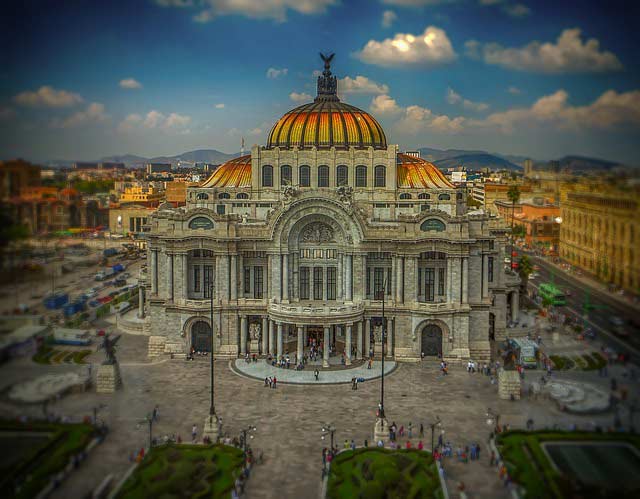Do you want to learn Spanish abroad?
Don’t know whether to choose Mexico or Spain?
I’ll explain the pros and cons of traveling to these countries …
Many students who want to travel abroad to study Spanish don’t know where to go.
Which is the best place to learn Spanish?
Today I will show you the best destinations so you can choose the best option.
But first…
Contents
WHY DID I CHOOSE MEXICO AND SPAIN?
Recently I did an investigation, and the numbers of students traveling abroad to study Spanish is growing. This is especially true in Spain; according to data from the Federación Española de Asociaciones de Escuelas de Español para Extranjeros (FEDELE), in 2007, 858,000 students traveled to Spain. The majority of these students were Germans (23%) and Americans (13%). These figures make Spain the main destination for studying Spanish abroad.
According to a study done by TurEspaña, Mexico, on the other hand, is the main competitor to Spain because of its advantages in location, cost, and other things that we will analyze in a moment.
The figures are far from equaling those of Spain, but Mexico reaches about 30 thousand students each year. These students are usually from the United States and Canada.
Both destinations are equally valuable, but what is the best option?
This article will be based on the study by TurEspaña and will only use the preferences of the American students.
For American students, we will take three aspects that they consider important a priori when choosing a school:
– Attractiveness of the Country
– Cost of Courses
– Academic Prestige
To make it easier, I will compare only the most important cities of these countries: Mexico City and Madrid.
1. Madrid

1.1) Attractiveness of the City
- Spanish Culture: American students highly value the cultural environment of Spain as a country full of beautiful and historic places.
Spain is the third most visited country in the world with 68.2 million tourists in 2016.
Some of the most popular places to visit are The Prado Museum, The Royal Palace of Madrid, Parque del Retiro, The Cathedral of Almudena and the Royal Basilica of San Francisco.
Its gastronomy is famous thanks to its variety of dishes and its proximity to the sea. Many describe the cuisine as a style that goes from rural to coastal.
Due to immigration, and thanks to the influence of other American peoples including those from Mexico, Peru, and Colombia, Spanish cuisine has unique touches and a lot of personality.
- Artistic History: One of the most important figures in world literature is Miguel de Cervantes, and thanks to his work “Don Quijote de la Mancha”, Spain is recognized and admired in the literary world.
It is renowned for other art forms, such as painting, and was home to painters including Picasso, Diego Velázquez, Francisco Goya and Salvador Dalí. This is just a sample of the richness of spain’s artistic history
- Climate: The capital of Madrid enjoys an excellent climate. Most of the time it has an average temperature of between 14 and 15 degrees Celsius (57 Fahrenheit) throughout the year.
But if you like the sun and the dry weather, the best option is to travel in summer because this season is very hot. The temperature in July can reach up to 40 degrees Celsius (104 Fahrenheit)
The downside of the season is that there are many tourists during this time, and problems with accommodation and transportation can increase.
In the winter, Spain has an average temperature of 9.5 to 11 degrees Celsius (49.1 Fahrenheit), and the coldest month is January, with about 6 degrees Celsius (42 Fahrenheit). It has occasional snowfall, but not of the magnitude that is present in the United States.
In general, it is a country with a stable and pleasant temperature.
- Transportation: One of the most important attractions of this city is transportation. Madrid has an excellent transport network.
The metro has 301 stations and 14 subway lines that provide coverage to the entire city center and areas close to it.
The cost of traveling by metro for a single ticket is 1.5 to 2 euros, although it can vary depending on where you travel.
The center of Madrid is small compared to Mexico City, so you can be anywhere in a short time.
1.2) Cost of the courses
It is difficult to have an average of the costs of the courses because it depends a lot on the weeks you stay, the level, complementary activities and the prestige of the center. However, prices range from $95 euros to $2,500 euros.
You have to take into account that the centers are expensive mainly because most of them have official certifications such as the Instituto Cervantes.
Cons: Many of the centers are very expensive and this can be a disadvantage for many people who are looking to improve their Spanish.
1.3) Academic Prestige
Universities have their ways of evaluating the quality of their courses, but for centers that are not affiliated with a university, the certification of the quality of the courses is fundamental.
Most of the centers seek certification from Instituto Cervantes, which guarantees the quality of teaching and looks for an effective method for teaching Spanish.
Cons: If your idea is to learn Spanish just for leisure or you need to improve your work situation, certification is of little importance. The important thing is to learn- it does not matter if you get a certification.
Spain is an excellent option to learn Spanish. The quality of its cities and transport, its climate, and the great experience in teaching Spanish is certainly an advantage.
However, you should consider that it will be an expensive trip and you will learn a variety of Spanish which is not very common. Remember that if you are American, you are more likely to meet a Mexican, a Colombian or an Argentine than a Spanish person.
If your intention is to improve your Spanish for non-academic reasons, the best option may be elsewhere.
2. Mexico City

2.1) Attractiveness of the City
- Mexican Culture: Mexican culture has practically influenced the entire continent.
Its beaches and its archaeological ruins are admired all over the world.
Mexico is the ninth most visited country in the world, with 32.1 million tourists in 2016.
Some of the most popular places to visit are: The Historical Center, Chapultepec Castle, Museum of Anthropology and History and The Museum of Frida Kahlo.
Like Spain, Mexico is famous for the variety of its food. Its ingredients are an inspiration for many cultures of the world; chili, chocolate, avocado, vanilla, tomato, and corn are just some of the products from Mexico.
The mixture of cultures between Spain and Mexico has developed well-known dishes throughout the world.
- Artistic History: One of the most important representatives of mexican literature is Octavio Paz, winner of a Nobel Prize for Literature. But there are others writers that you should know: Sor Juana Inés de la Cruz, Carlos Fuentes, Juan Rulfo, José Emilio Pacheco and even Nezahualcoyotl (Governor of Texcoco).
Representatives of other arts such as Diego Rivera, Frida Kahlo, David Alfaro Siqueiros, María Izquierdo and Remedios Varo make Mexico an important destination for observing the best artists.
- Climate: Mexico City has a pleasant climate that varies between 15 and 30 degrees Celsius (59-86 )throughout the year.
The best time to travel could be in January, February, and March, although the winter temperatures are between 18 and 25 degrees Celsius ( 64 – 77 Fahrenheit ). There is less rain and it’s not too hot.
Cons: The summer is very rainy. Remember that Mexico City had one of the largest lakes in America and is a region where rainfall is constant, without the temperature being low.
Winter has an average of 10 degrees Celsius ( 50 Fahrenheit ) and very rarely the thermometer falls to 0 degrees Celsius (32 Fahrenheit).
The truth is that Mexico City enjoys a very stable climate and rarely has an extreme climate.
- Transportation: Mexico City has a huge subway network.
It has 12 subway lines that cover most of the City.
Cons: Unfortunately, outside of the subway the city transport is a problem, mainly due to the overcrowding and lack of renovation.
There is also a big traffic problem in the city; you should always be aware of which places suffer from this problem.
Fortunately, there are options like the Metrobus lines and the numerous taxis that can transport you around the city.
2.2) Cost of the courses
Unlike Madrid, courses can be more economical. For about 6 weeks at UNAM’s CEPE, you can pay $ 400, which includes books.
Most of the courses in this institution are intensive, meaning there is no additional fee for the type of course and level.
2.3) Academic Prestige
Mexico does not have the number of centers that Spain has.
In addition, they do not have an association that guarantees the quality of the courses. However, the institution that can give you a certificate, regardless of the institution in which you take a course, is CEPE in UNAM.
UNAM is the most important university in Mexico and one of the most important universities in Latin America.
Mexico City is a good place if you are thinking you don’t want to spend too much money.
Cons: However, you should take into account that it is a place where there are traffic problems and in some areas it can be unsafe.
The best thing is that you will learn a dialect of Spanish that is very common in the United States. It is very probable that you’ll find a Mexican in your country, so it may be worth studying Spanish in Mexico.
Conclusion
If you feel like going to a place with more comforts and facilities to travel, your best option is Spain.
If you feel like studying Spanish in a place which is closer to the U.S., then Mexico would be your best option.
I want to hear your opinions.
Maybe you want to read: An American Student Tells you How Difficult it is to Learn Spanish
I’d love to hear what you think about this post.
Or maybe you have a question about something you read.
Either way, let me know by leaving a quick comment below right now.

Cuautémoc wasn’t a poet… That was Nezahualcoyotl, governor of Texcoco, at the end of xv century
Thank you Jorge, you`re right! Greetings!
I wish for once that content wasn’t always written for Americans. You said 23% going to Spain are from Germany, I wonder what the percentage split is for Europeans vs North Americans going to Spain, and what percentage of the same groups going to Mexico. As a European interested in learning for travel, I would choose Spain.
Hi Ian, TurEspaña says that of tourists traveling to learn Spanish in Spain 73.5% are European and 21.8% American. In Mexico 60% are American and 10% are European. Thank you for your comments!
Thank you! Greetings!
Thanks for your comments!
Hi Aldo, thanks for writing this article and give the ones who want to learn Spanish the best two options to do it. According to your article, Spain is the best option for its attractions and turistic places, but what I don’t like about Spain is its Spanish. Mexico has the advantage that its Sapanish is already considered as the stadard and, from my point of view, it’s more understandable.
In addition, the wheather is more bearable, the fees of the courses are cheaper and the people are very welcoming. I’ve nothing against Spain, but I prefer studying in Mexico to Spain.
Hi Alex, you´re right! Mexico is a great option. Greetings!